Nonsingular Terminal Sliding Mode Control Based on Binary Particle Swarm Optimization for DC–AC Converters
Abstract
1. Introduction
2. Modeling of DC–AC Converter
3. Proposed Control Technique
3.1. Problem Statement
3.2. Control Design
4. Simulation and Experimental Results
5. Discussion and Future Research
6. Conclusions
Author Contributions
Funding
Acknowledgments
Conflicts of Interest
References
- Jeyraj, S.; Rahim, N.A. Multilevel inverter for grid-connected PV system employing digital PI controller. IEEE Trans. Ind. Electron. 2009, 56, 149–158. [Google Scholar]
- Mirzaei, M.; Tibaldi, C.; Hansen, M.H. PI controller design of a wind turbine: Evaluation of the pole-placement method and tuning using constrained optimization. J. Phys. Conf. Ser. 2016, 753, 1–7. [Google Scholar] [CrossRef]
- Jin, W.; Li, Y.L.; Sun, G.Y.; Bu, L.Z. H-infinity repetitive control based on active damping with reduced computation delay for LCL-type grid-connected inverters. Energies 2017, 10, 586. [Google Scholar]
- Xie, C.; Zhao, X.; Savaghebi, M.; Meng, L.; Guerrero, J.M.; Quintero, J.C.V. Multirate fractional-order repetitive control of shunt active power filter suitable for microgrid applications. IEEE J. Emerg. Sel. Top. Power Electron. 2017, 5, 809–819. [Google Scholar] [CrossRef]
- Benyoucef, A.; Kara, K.; Chouder, A.; Silvestre, S. Prediction-based deadbeat control for grid-connected inverter with L-filter and LCL-filter. Electr. Power Compon. Syst. 2014, 42, 1266–1277. [Google Scholar] [CrossRef]
- Kim, J.; Hong, J.; Kim, H. Improved direct deadbeat voltage control with an actively damped inductor-capacitor plant model in an islanded AC microgrid. Energies 2016, 42, 978. [Google Scholar] [CrossRef]
- Bevrani, H.; Feizi, M.R. Robust frequency control in an islanded microgrid: H-infinity and mu-synthesis Approaches. IEEE Trans. Smart Grid 2016, 7, 706–717. [Google Scholar] [CrossRef]
- Ren, F.Y.; Lin, C.; Yin, X.H. Design a congestion controller based on sliding mode variable structure control. Comput. Commun. 2005, 28, 1050–1061. [Google Scholar] [CrossRef]
- Ignaciuk, P.; Bartoszewicz, A. Congestion Control in Data Transmission Networks: Sliding Mode and Other Designs (Communications and Control Engineering); Springer: New York, NY, USA, 2013. [Google Scholar]
- Tan, S.C.; Lai, Y.M.; Tse, C.K. Sliding Mode Control of Switching Power Converters: Techniques and Implementation; Taylor & Francis: Boca Raton, FL, USA, 2012. [Google Scholar]
- Yu, X.; Kaynak, O. Sliding mode control with soft computing: A survey. IEEE Trans. Ind. Electron. 2009, 56, 3275–3285. [Google Scholar]
- Kang, S.W.; Kim, K.H. Sliding mode harmonic compensation strategy for power quality improvement of a grid-connected inverter under distorted grid condition. IET Power Electron. 2015, 8, 1461–1472. [Google Scholar] [CrossRef]
- Kaynak, A.B.; Utkin, V.I. Industrial applications of sliding mode: Control Part II. IEEE Trans. Ind. Electron. 2009, 56, 3271–3274. [Google Scholar] [CrossRef]
- Kayacan, E.; Cigdem, O.; Kaynak, O. Sliding mode control approach for online learning as applied to type-2 fuzzy neural networks and its experimental evaluation. IEEE Trans. Ind. Electron. 2012, 59, 3510–3520. [Google Scholar] [CrossRef]
- Vardan, M.; Ekaterina, A. Sliding Mode in Intellectual Control and Communication: Emerging Research and Opportunities; IGI Global: Hershey, PA, USA, 2017. [Google Scholar]
- Derbel, N.; Ghommam, J.; Zhu, Q.M. Applications of Sliding Mode Control; Springer: Singapore, 2017. [Google Scholar]
- Yan, X.G.; Spurgeon, S.K.; Edwards, C. Variable Structure Control of Complex Systems: Analysis and Design; Springer International Publishing: New York, NY, USA, 2017. [Google Scholar]
- Andreas, R.; Luise, S. Variable-Structure Approaches: Analysis, Simulation, Robust Control and Estimation of Uncertain Dynamic Processes; Springer International Publishing: New York, NY, USA, 2016. [Google Scholar]
- Abrishamifar, A.; Ahmad, A.A.; Mohamadian, M. Fixed switching frequency sliding mode control for single-phase unipolar inverters. IEEE Trans. Power Electron. 2012, 27, 2507–2514. [Google Scholar] [CrossRef]
- Hao, X.; Yang, X.; Liu, T.; Huang, L.; Chen, W.J. A sliding-mode controller with multiresonant sliding surface for single-phase grid-connected VSI with an LCL filter. IEEE Trans. Power Electron. 2013, 28, 2259–2268. [Google Scholar] [CrossRef]
- Aghatehrani, R.; Kavasseri, R. Sensitivity-analysis-based sliding mode control for voltage regulation in microgrids. IEEE Trans. Sustain. Energy 2013, 4, 50–57. [Google Scholar] [CrossRef]
- Camila, L.C.; Tiago, R.O.; Jose, P.V.S.C. Output-feedback sliding-mode control of multivariable systems with uncertain time-varying state delays and unmatched non-linearities. IET Control Theory Appl. 2013, 7, 1616–1623. [Google Scholar]
- Hung, L.C.; Lin, H.P.; Chung, H.Y. Design of self-tuning fuzzy sliding mode control for TORA system. Expert Syst. Appl. 2007, 32, 201–212. [Google Scholar] [CrossRef]
- Hemdani, A.; Dagbagi, M.; Naouar, W.M.; Idkhajine, L.; Belkhodja, I.S.; Monmasson, E. Indirect sliding mode power control for three phase grid connected power converter. IET Power Electron. 2015, 8, 977–985. [Google Scholar] [CrossRef]
- Liu, J.K.; Wang, X.H. Terminal Sliding Mode Control. In Advanced Sliding Mode Control for Mechanical Systems; Springer: Berlin, Germany, 2011; pp. 137–162. [Google Scholar]
- Bhave, M.; Janardhanan, S.; Dewan, L. A finite-time convergent sliding mode control for rigid underactuated robotic manipulator. Syst. Sci. Control Eng. 2014, 2, 493–499. [Google Scholar] [CrossRef]
- Hong, Y.G.; Yang, G.W.; Cheng, D.Z.; Spurgeon, S. Finite time convergent control using terminal sliding mode. J. Control Theory Appl. 2004, 2, 69–74. [Google Scholar] [CrossRef]
- Yu, X.H.; Xu, J.X. Variable Structure Systems with Terminal Sliding Modes. In Variable Structure Systems: Towards the 21st Century; Springer: Berlin, Germany, 2002. [Google Scholar]
- Roy, S.; Roy, S.B.; Kar, I.N. Adaptive–robust control of euler–lagrange systems with linearly parametrizable uncertainty bound. IEEE Trans. Control Syst. Technol. 2018, 26, 1842–1850. [Google Scholar] [CrossRef]
- Roy, S.; Roy, S.B.; Kar, I.N. A new design methodology of adaptive sliding mode control for a class of nonlinear systems with state dependent uncertainty bound. In Proceedings of the 2018 15th International Workshop on Variable Structure Systems (VSS), Graz, Austria, 9–11 July 2018; pp. 414–419. [Google Scholar]
- Roy, S.; Kar, I.N. Adaptive-robust control of uncertain euler-lagrange systems with past data: A time-delayed approach. In Proceedings of the 2016 IEEE International Conference on Robotics and Automation (ICRA), Stockholm, Sweden, 16–21 May 2016; pp. 5715–5720. [Google Scholar]
- Roy, S.; Kar, I.N.; Lee, J.; Tsagarakis, N.G.; Caldwell, D.G. Adaptive-robust control of a class of el systems with parametric variations using artificially delayed input and position feedback. IEEE Trans. Control Syst. Technol. 2019, 27, 603–615. [Google Scholar] [CrossRef]
- Roy, S.; Kar, I.N.; Lee, J.; Jin, M.L. Adaptive-robust time-delay control for a class of uncertain euler–lagrange systems. IEEE Trans. Ind. Electron. 2017, 64, 7109–7119. [Google Scholar] [CrossRef]
- Plestan, F.; Shtessel, Y.; Brégeault, V.; Poznyak, A. Sliding mode control with gain adaptation—Application to an electropneumatic actuator. Control Eng. Pract. 2013, 21, 679–688. [Google Scholar] [CrossRef]
- Plestan, F.; Shtessel, Y.; Brégeault, V.; Poznyak, A. New methodologies for adaptive sliding mode control. Int. J. Control 2010, 83, 1907–1919. [Google Scholar] [CrossRef]
- Utkin, V.I.; Poznyak, A.S. Adaptive sliding mode control with application to super-twist algorithm: Equivalent control method. Automatica 2013, 49, 39–47. [Google Scholar] [CrossRef]
- Moreno, J.A.; Negrete, D.Y.; González, V.T.; Fridman, L. Adaptive continuous twisting algorithm. Int. J. Control 2016, 89, 1798–1806. [Google Scholar] [CrossRef]
- Roy, S.; Lee, J.N.; Baldi, S. A New Continuous-Time Stability Perspective of Time-Delay Control: Introducing a State-Dependent Upper Bound Structure. IEEE Control Syst. Lett. 2019, 3, 475–480. [Google Scholar] [CrossRef]
- Alireza, S.; Mozhgan, A. Binary PSO-based dynamic multi-objective model for distributed generation planning under uncertainty. IET Renew. Power Gener. 2012, 6, 67–78. [Google Scholar]
- Lin, C.J.; Chern, M.S.; Chih, M.C. A binary particle swarm optimization based on the surrogate information with proportional acceleration coefficients for the 0-1 multidimensional knapsack problem. J. Ind. Prod. Eng. 2016, 33, 77–102. [Google Scholar] [CrossRef]
- Silva, S.A.; Sampaio, L.P.; Oliveira, F.M.; Durand, F.R. Feed-forward DC-bus control loop applied to a single-phase grid-connected PV system operating with PSO-based MPPT technique and active power-line conditioning. IET Proc. Renew. Power Gener. 2017, 11, 183–193. [Google Scholar] [CrossRef]
- Babu, T.S.; Ram, J.P.; Dragicevic, T.; Miyatake, M.; Blaabjerg, F.; Rajasekar, N. Particle Swarm Optimization Based Solar PV Array Reconfiguration of the Maximum Power Extraction Under Partial Shading Conditions. IEEE Trans. Sustain. Energy 2018, 9, 74–85. [Google Scholar] [CrossRef]
- Awadallah, M.A.; Venkatesh, B. Bacterial Foraging Algorithm Guided by Particle Swarm Optimization for Parameter Identification of Photovoltaic Modules. Can. J. Electr. Comput. Eng. 2016, 39, 150–157. [Google Scholar] [CrossRef]
- Emel’yanov, S.V.; Korovin, S.K.; Levant, A. High order sliding modes in control systems. Comput. Math. Model. 1996, 7, 294–318. [Google Scholar]
- Levant, A. Higher-order sliding modes, differentiation and output-feedback control. Int. J. Control 2003, 76, 924–941. [Google Scholar] [CrossRef]
- Valenciaga, F.; Fernandez, R.D. Multiple-input–multiple-output high-order sliding mode control for a permanent magnet synchronous generator wind-based system with grid support capabilities. IET Renew. Power Gener. 2015, 9, 925–934. [Google Scholar] [CrossRef]
- Dehkordi, N.M.; Sadati, N.; Hamzeh, M. A robust backstepping high-order sliding mode control strategy for grid-connected DG units with harmonic/interharmonic current compensation capability. IEEE Trans. Sustain. Energy 2017, 8, 561–572. [Google Scholar] [CrossRef]
- Chen, D.; Jun, Y.; Wang, Z.; Li, S.H. Universal active disturbance rejection control for non-linear systems with multiple disturbances via a high-order sliding mode observer. IET Control Theory Appl. 2017, 11, 1194–1204. [Google Scholar]
- Deng, H.W.; Li, Q.; Chen, W.R.; Zhang, G.R. High-order sliding mode observer based OER control for PEM fuel cell air-feed system. IEEE Trans. Energy Convers. 2018, 33, 232–244. [Google Scholar] [CrossRef]

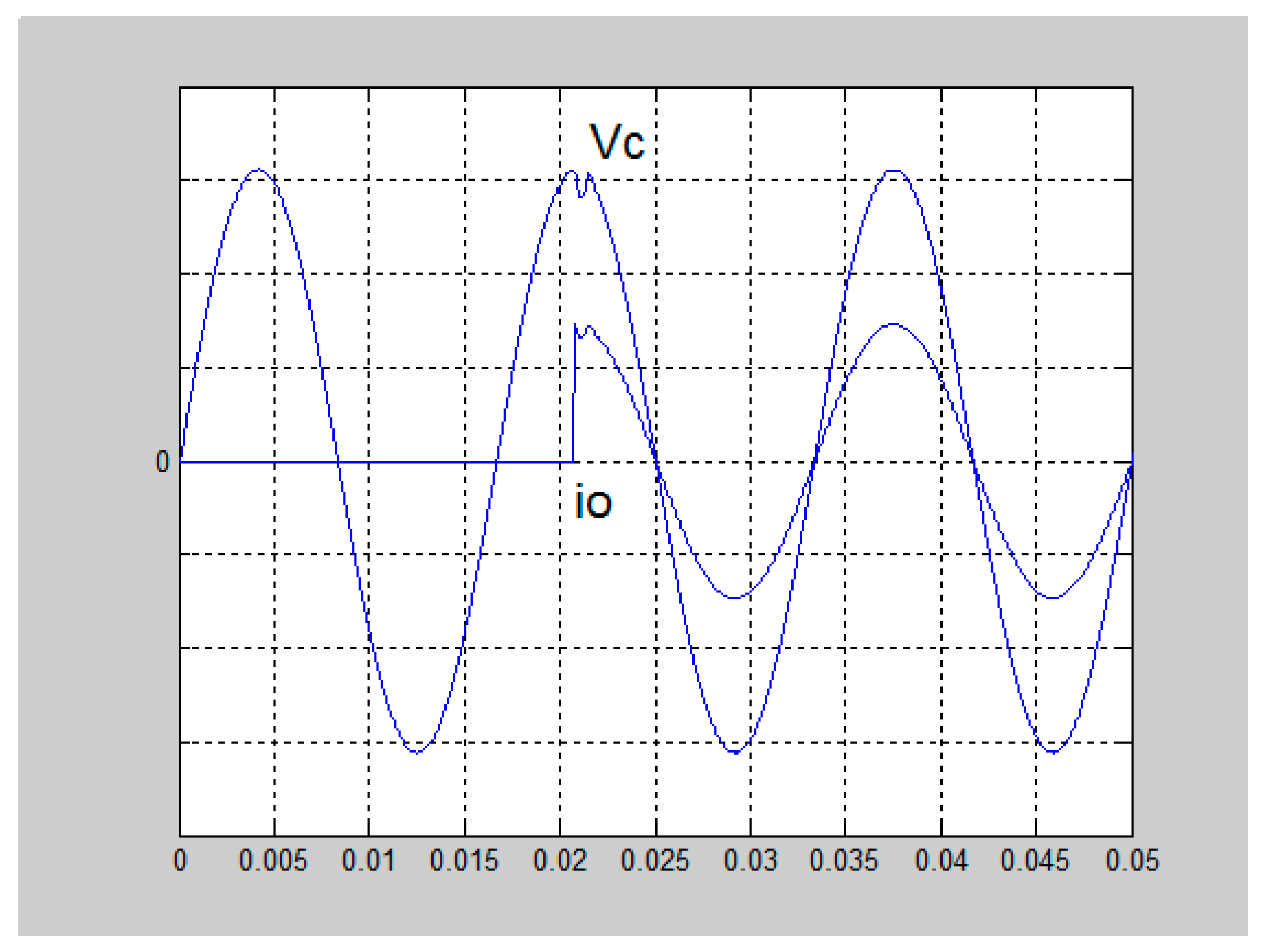
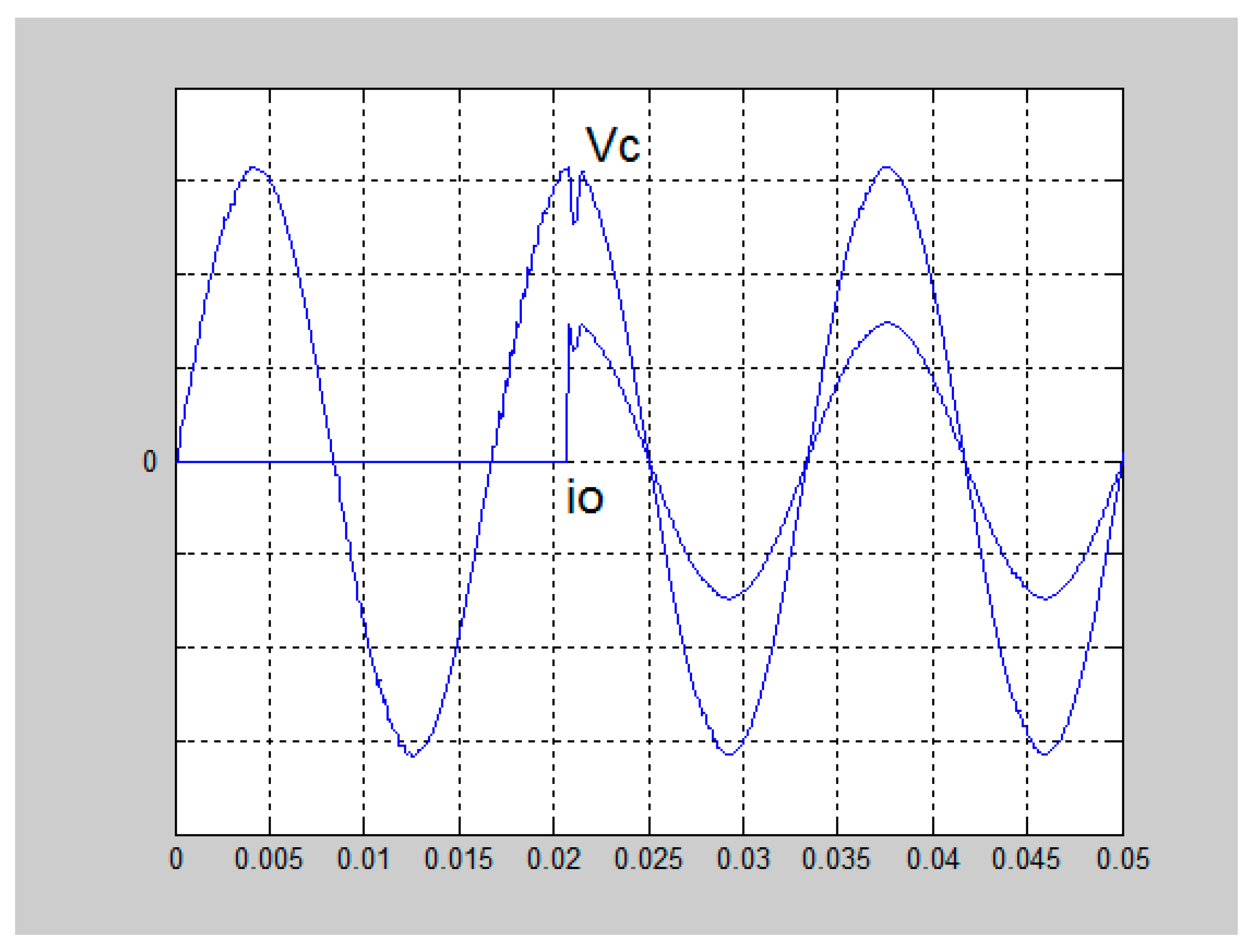
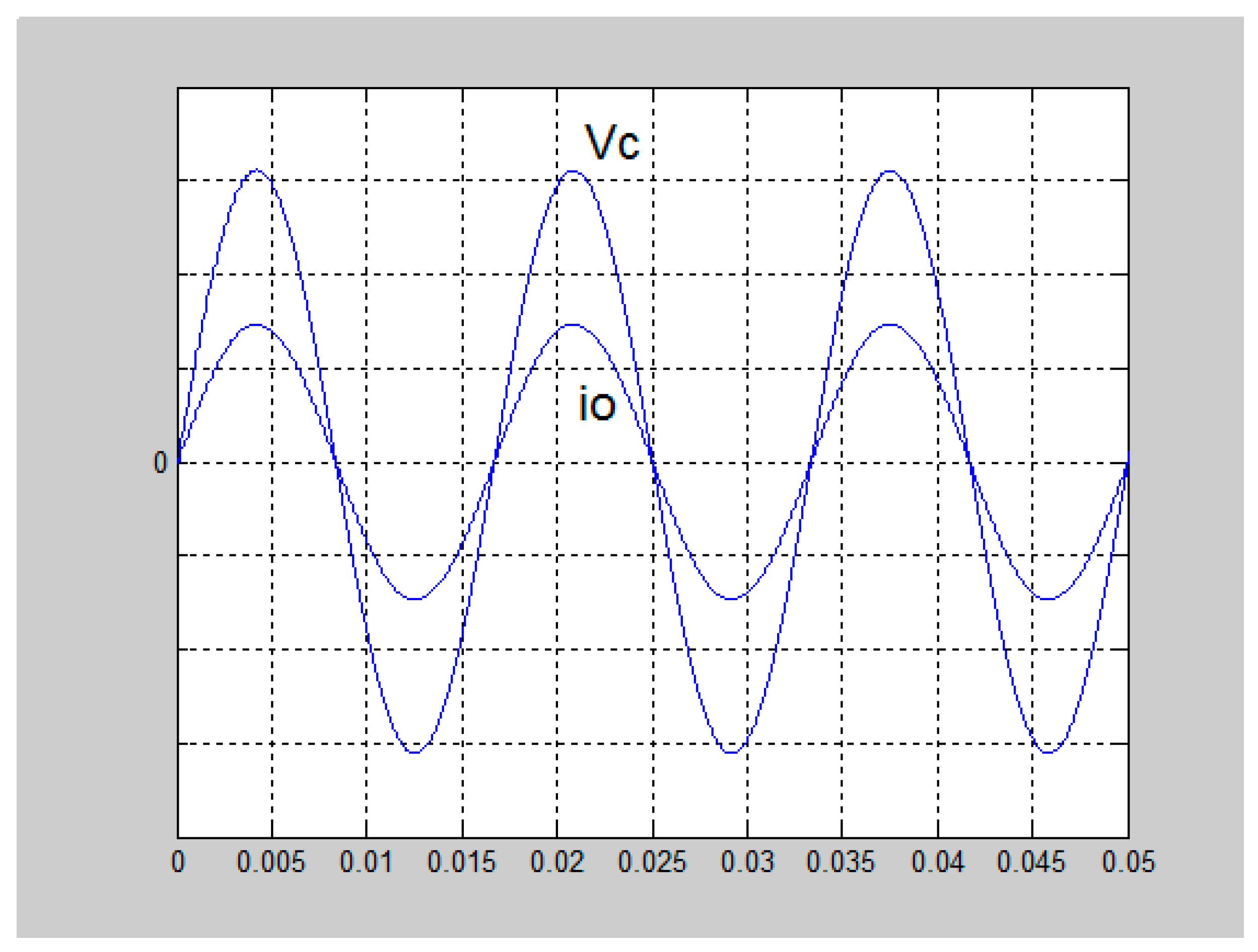
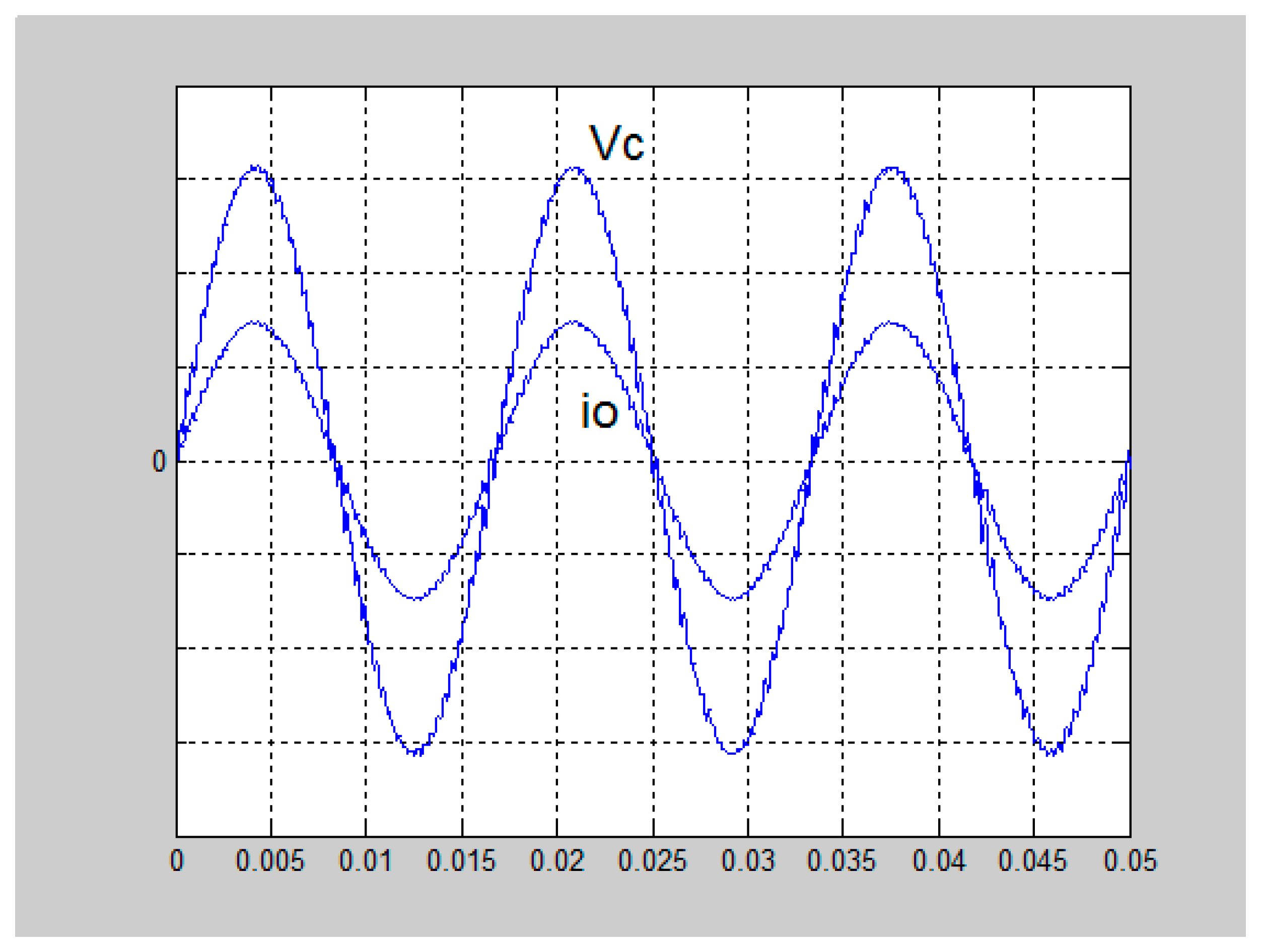
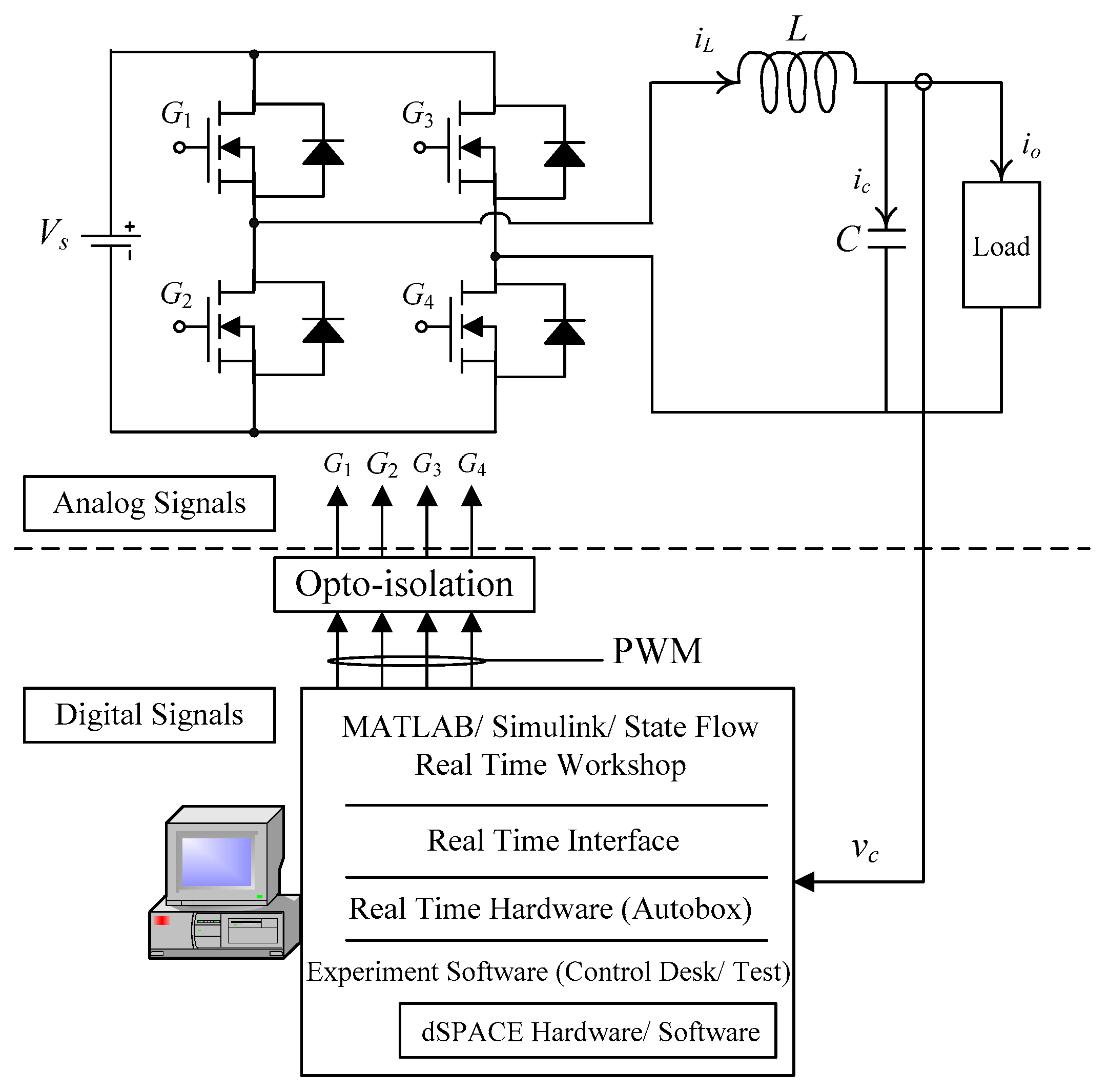
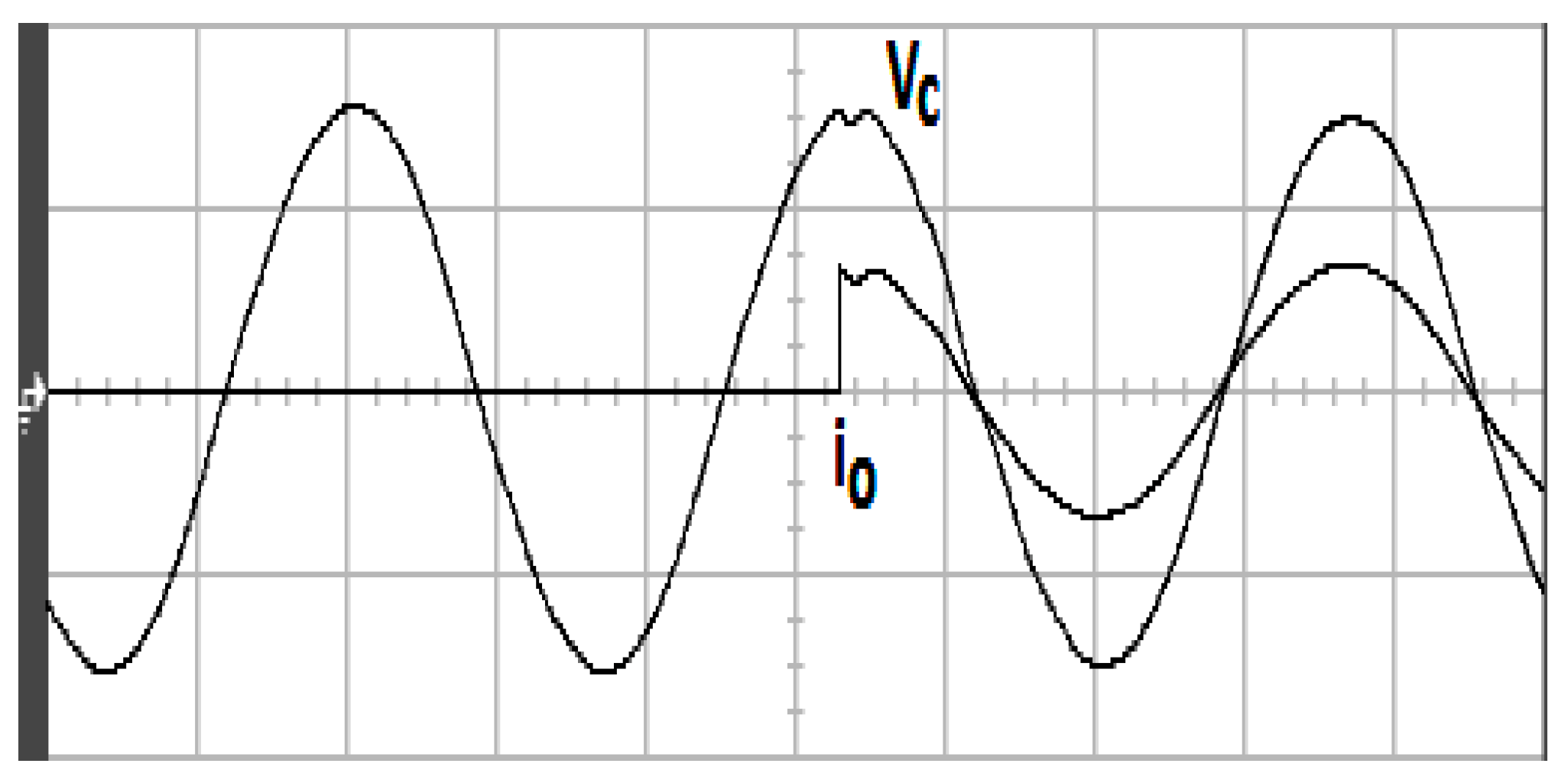
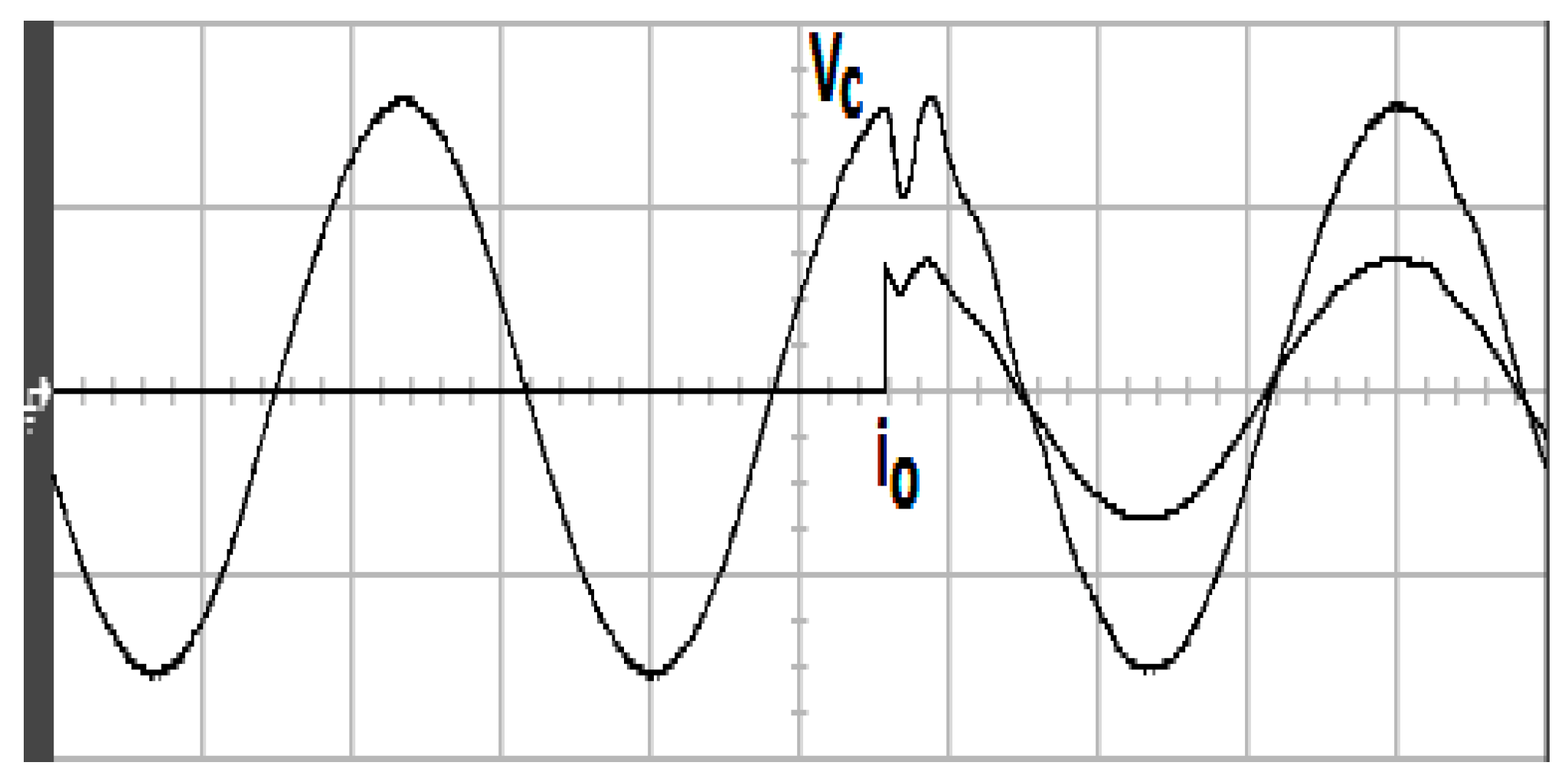

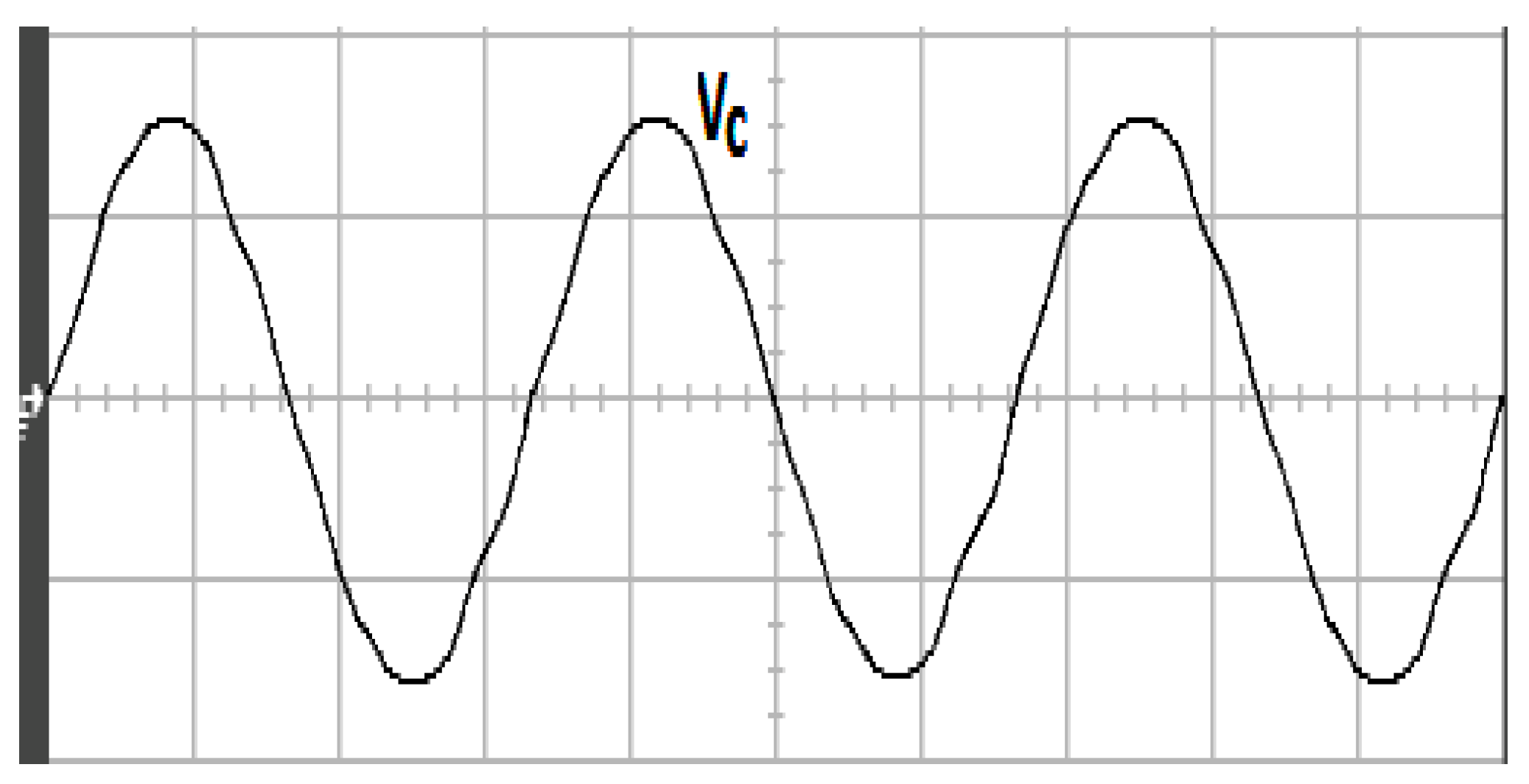
| Simulations | ||
|---|---|---|
| Improved technique | Step loading (Voltage Slump) | 7 Vrms |
| LC variation (%THD) | 0.23% | |
| Classical TSMC | Step loading (Voltage Slump) | 22 Vrms |
| LC variation (%THD) | 15.98% | |
| Experiments | ||
|---|---|---|
| Improved technique | Step loading (Voltage Slump) | 8 Vrms |
| LC variation (%THD) | 0.41% | |
| Classical TSMC | Step loading (Voltage Slump) | 36 Vrms |
| LC variation (%THD) | 11.43% | |
© 2019 by the authors. Licensee MDPI, Basel, Switzerland. This article is an open access article distributed under the terms and conditions of the Creative Commons Attribution (CC BY) license (http://creativecommons.org/licenses/by/4.0/).
Share and Cite
Chang, E.-C.; Cheng, C.-A.; Yang, L.-S. Nonsingular Terminal Sliding Mode Control Based on Binary Particle Swarm Optimization for DC–AC Converters. Energies 2019, 12, 2099. https://doi.org/10.3390/en12112099
Chang E-C, Cheng C-A, Yang L-S. Nonsingular Terminal Sliding Mode Control Based on Binary Particle Swarm Optimization for DC–AC Converters. Energies. 2019; 12(11):2099. https://doi.org/10.3390/en12112099
Chicago/Turabian StyleChang, En-Chih, Chun-An Cheng, and Lung-Sheng Yang. 2019. "Nonsingular Terminal Sliding Mode Control Based on Binary Particle Swarm Optimization for DC–AC Converters" Energies 12, no. 11: 2099. https://doi.org/10.3390/en12112099
APA StyleChang, E.-C., Cheng, C.-A., & Yang, L.-S. (2019). Nonsingular Terminal Sliding Mode Control Based on Binary Particle Swarm Optimization for DC–AC Converters. Energies, 12(11), 2099. https://doi.org/10.3390/en12112099







